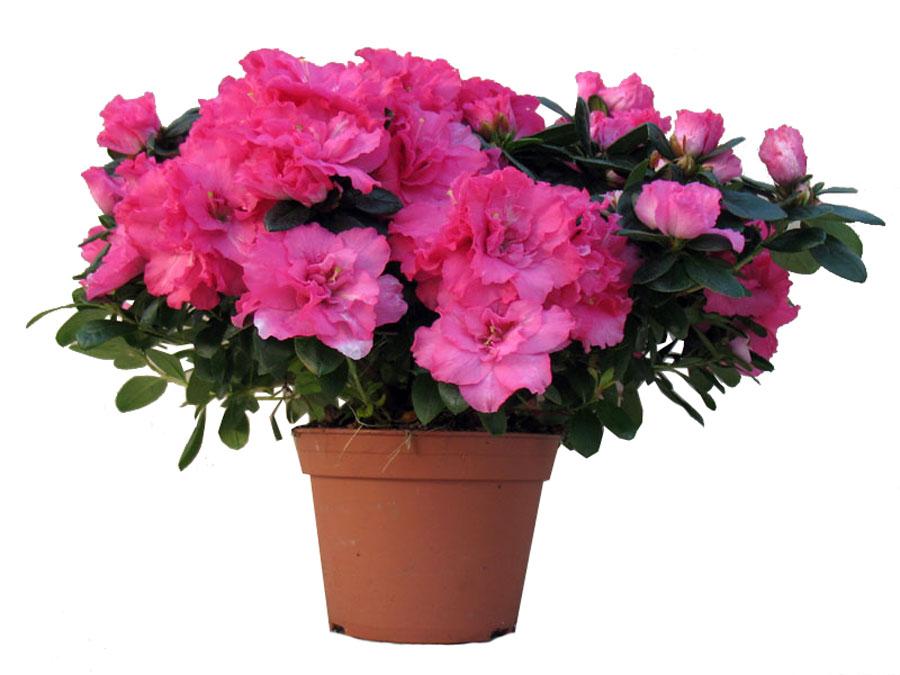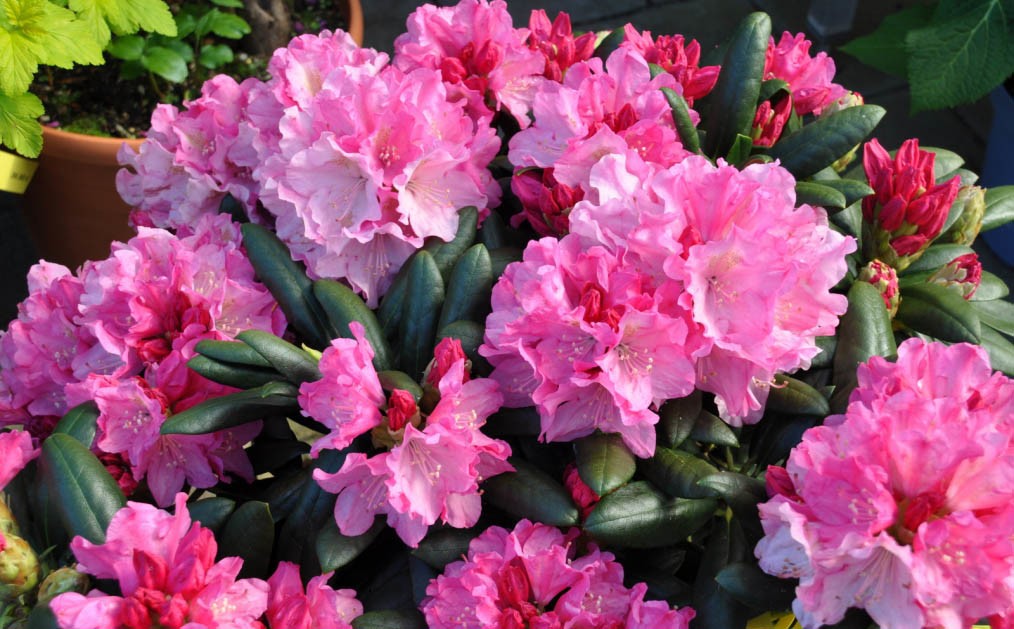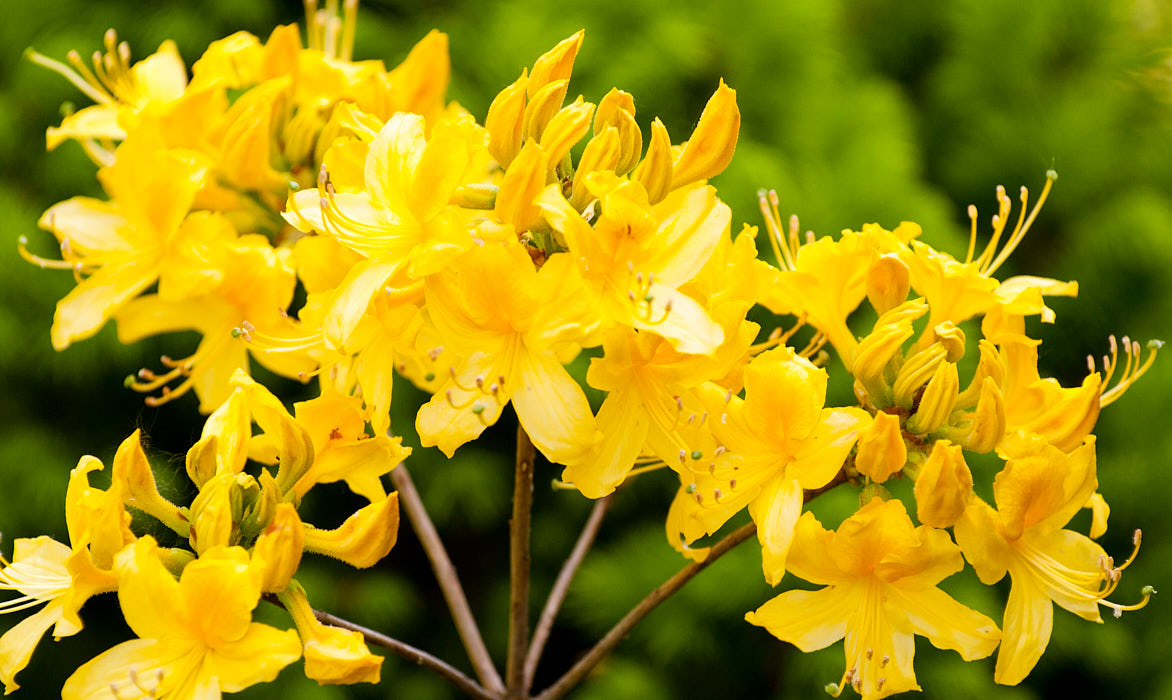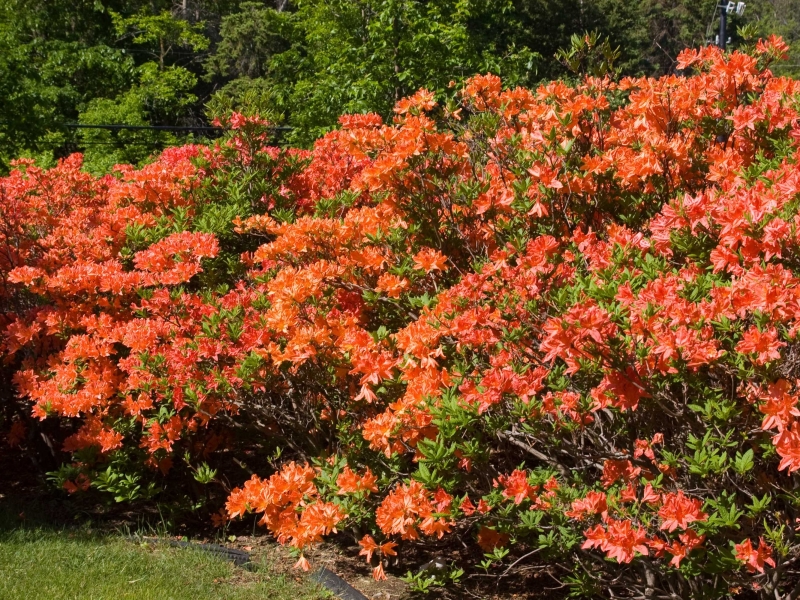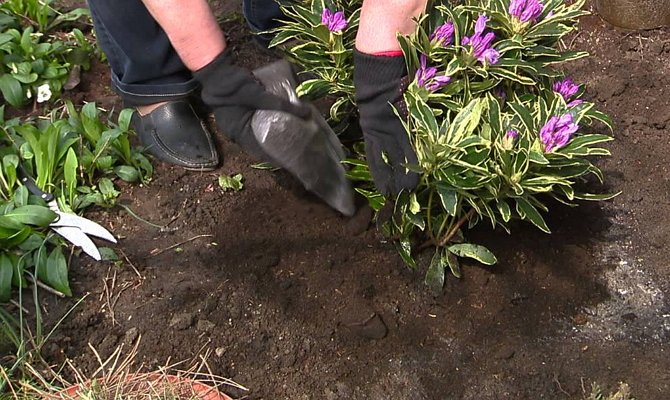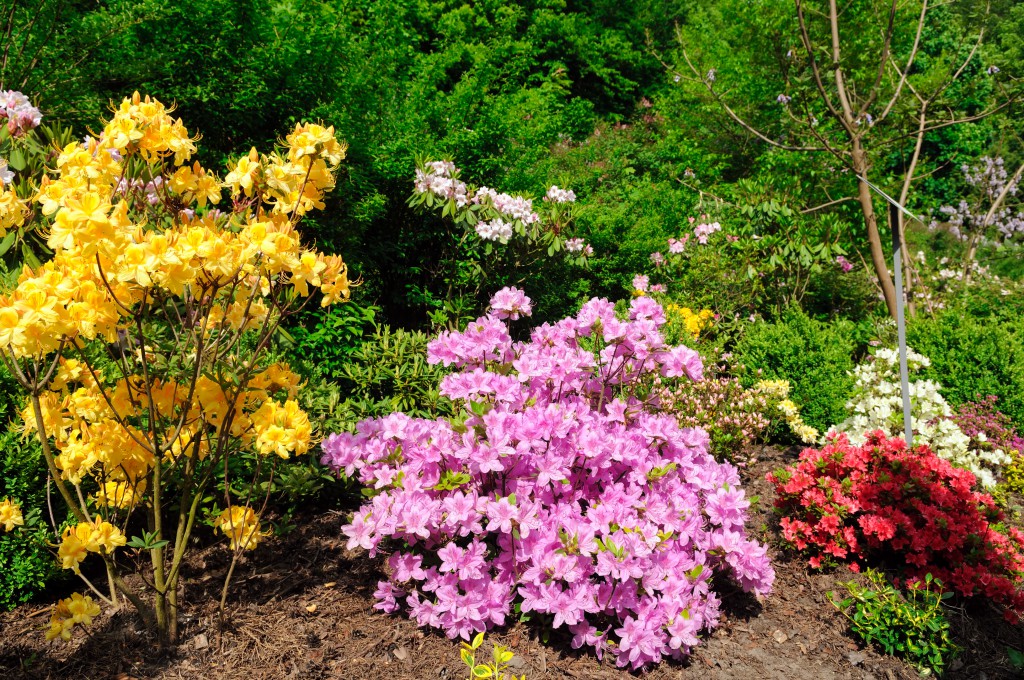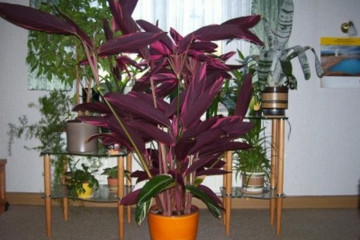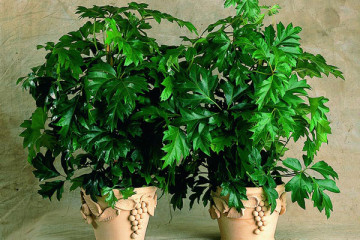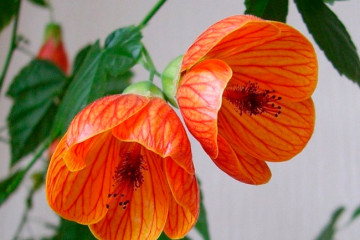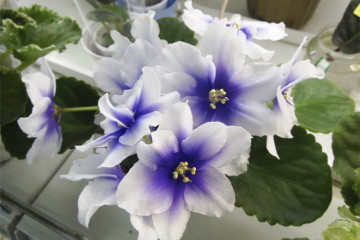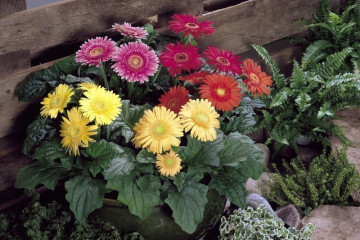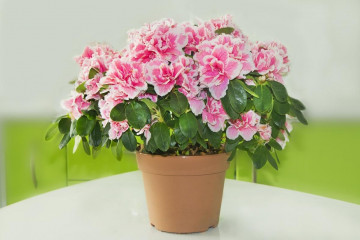Azalea - home flower, description of varieties
Content:
Azalea is a houseplant of the Heather family. In China, it is considered a "green island" of longevity. If you provide optimal conditions for maintenance, it will delight you with long flowering, luxurious buds, turn the landscape in the garden or a room into a bright show. Also, the plant is widely used in aromatherapy: relieves fatigue and inflammation, gives strength, clarifies thoughts when inhaling the delicate aroma of fragrant flowers.
Flower history
For the first time, the azalea flower became known to Europeans in the 17th century. They began to study, breed, cultivate the botanists of Belgium, Germany, France, England. They even competed with each other, developing new varieties. The first variety of a garden plant was bred in 1820. Active cultivation began at the beginning of the 20th century. Azalea turned out to be very finicky. For breeding, the creation of one variety took up to 10 years.
Involvement in the genus Rhododendron
For a long time botanists had to study the relationship and similarity between rhododendron and azalea. They belong to the same Heather family. Azalea is essentially a subgenus of numerous species of rhododendrons. Rhododendron is translated as “rose tree”. This is a collective concept of individual species of azaleas.
At first, botanists ranked the plant as belonging to the Vereskovy family. Later - to the genus Rhododendron. To avoid confusion, amateur gardeners began to call the houseplant an azalea, and other gardeners - rhododendrons. Although they differ from each other in external characteristics. A garden rhododendron has 10 stamens, and a room azalea has no more than five.
Reasons for popularity
The plant is successfully used in landscape design, as it leaves no one indifferent in front of its flower garlands of different shades. The popularity of azalea white, yellow, Japanese, garden, Pontic is that the species:
- keep fresh for up to two weeks if put in water;
- do not require special conditions of detention, despite the fact that they are considered exotic flowers;
- help to improve family relationships and restore peace in the house, as they neutralize selfishness;
- charge with vigor and optimism, which is important for owl people who have a hard time waking up in the morning;
- they will bring positive energy to the house, and the owner - self-confidence;
- will delight you with magnificent flowering in winter, since they begin to bloom for the first time in January-February.
Azalea is one of the beautifully flowering shrubs. Decorate lawns in early summer or large gardens in Chinese, Japanese style. The shrub looks appropriate next to many coniferous varieties: hydrangea, deciduous barberry, euonymus, heather, camellia, Japanese maple.
Brief description of common types
In nature, there are 350 official species of azalea. Although breeders have bred over 1000 today. Some bushes, for example, the Gibraltar azalea and the Golden Lights azalea do not grow more than 1 m, so they can be grown in apartments. Moreover, with proper pruning, it is quite possible to restrain growth up to 60 cm, not allowing the bushes to grow strongly.
Other interesting species of azalea:
- Stella Maris with crimson splashes on the petals and large white flowers;
- Albert-Elizabeth with bicolor wavy leaves with a wide stripe. Terry flowers up to 9 cm in diameter;
- Melina with carmine corollas, twisted petals and profuse flowering, completely hiding the leaves. The height of the bush is no more than 30 cm, but the crown is so wide that it grows up to 1.5 m.
Kermesina Alba is a tree-like plant with a bush up to 3 m in height and a lush crown. This is the original lignified azalea subspecies with snow-white small flowers. Will take its rightful place when grown in the garden.
Homebush is a frost-resistant variety developed by German breeders. The bushes are lush and compact. Inflorescences are bright pink or red. The leaves of the Homebush Azalea Nap Hill are large pointed, with pronounced veins. The variety blooms profusely in early June.
Germania Inkarno grows up to 1 m in height. Differs in rounded wavy petals with a pale pink center. Inkarno bushes are planted outdoors.
Knap Hill Hybrid is a frost-resistant hybrid, the result of crossing American and Japanese azaleas. The flowers of the Klondike azalea are large, up to 10 cm in diameter.
Erie is an indoor azalea with large semi-double bright pink flowers.
Indian azalea is an evergreen shrub with small petiolate leaf blades and flowering in winter.
The Japanese azalea Nabucco (Nabucco) has a slow growth up to 60 mm in height. There are also dwarf bushes no more than 30 cm in height. The flowers of the Japanese garden Pink Spyder Azalea Nabucco are small, deep pink, snow-white, purple, lilac, red.
There is also the Pontic azalea (rhododendron). Her flowers are yellow, thinning the inimitable sweet aroma. This deciduous azalea is the progenitor of various hybrids with soft bedding shades. Plants need to ensure proper air circulation and soil enriched with mineral components.
Azalea Mandarin Lights is an ornamental shrub up to 2 m in height with long large leaves. A distinctive feature of the variety is the decorative effect of the bush and the expressive brightness of flowering. Will decorate any garden. Dissolves orange buds.
Description of the visual features of the flower
Azalea is an evergreen deciduous perennial shrub. The height, depending on the species, reaches 1 m. The color and shape of the inflorescences can be different. Other external data:
- flowers - double and semi-double, 2-5 cm in diameter;
- leaves - woody, lanceolate;
- shoots - branched, apical;
- inflorescences - white, pink, purple, red.
The plant blooms profusely and for a long time. It is the flowers of an incredible number of shades that are the pride of the azalea (Azalea). She effectively looks like a indoor flower in the interior, and as a shrub on the street in landscape design.
The nuances of growing
This plant is capricious, therefore, for proper growth and development, it is important to create certain conditions, otherwise the azalea will often hurt if, for example, it is abruptly transferred from the greenhouse to the apartment.Features that are important to consider for full growth and development:
- when planting the azalea, it is better to move it away from other indoor plants for two weeks until it adapts;
- when buying, you should pay attention to the appearance. There should be no pests on buds, leaves and soil;
- the plant blooms for the first time in the third year. The duration of flowering depends entirely on the variety: 3 weeks - 2 months;
- elongated stems and flowering buds are important to cut off in time so that the rose bushes do not die for a long time and please the eye with bright shades;
- during the season, the azalea goes through four stages of development: vegetation, the formation of generative organs, the resting phase, the growth of buds and buds until they bloom completely. The first two phases occur at the beginning of summer with an increase in air temperature and natural light. Closer to summer, the rudiments of flowers cease to form, a period of rest begins. Although, with a difference in temperature, the buds will begin to grow and bloom in the winter. Moreover, the degree of plant growth can be influenced on your own, for example, shade in the heat, so that the bushes do not stretch up too much;
- for breeding, it is important to take into account the length of daylight hours. The buds are laid with a daylight hours at 8 o'clock. For further development and growth of shoots, at least 12 hours are required;
- to purchase a room azalea, it is better to buy young bushes that are better acclimatized indoors;
- when kept on a windowsill, drafts and sudden temperature fluctuations should not be allowed. Although azalea loves coolness, it still needs fresh air. For this, the room needs to be ventilated. In winter, place the pots closer to the glass to achieve an optimum temperature of 14 ° C.
How to care: requirements for conditions of detention
With proper care, observing the conditions of keeping, the azalea will certainly please with a long and lush flowering. Although the plant is tender, it needs periodic watering, powerful lighting, and a suitable temperature.
- Shine. Do not allow sunlight to hit the leaves, you need to shade in the heat. You can use ice cubes by wrapping them in paper and placing them in a flowerpot around the plant.
- Drying out of the soil is unacceptable, otherwise the flower will throw off the drying buds and flowers.
- It is better to water it with soft water once a week without lime in the composition or lower the flower pot in water, avoiding stagnation in order to avoid decay of the root system.
- When watering, you need to make sure that moisture does not get on the leaves and flowers, otherwise the appearance will be spoiled, since the petals will be covered with spots.
- Dry air and high temperatures damage the plant. Best kept in a cool place. Even in winter, the temperature in the room should be no higher than 5-10 ° C.
- The best light for an azalea is thin.
- When planting in an open area, it is necessary to mulch more often. The transplant is carried out once a year after flowering into a shallow flower pot. The transshipment method is used for the safety and integrity of the earthen lump. It is better to replant adult bushes once every 3 years, removing dried stems, branches and flowers.
- The preferred composition of the soil mixture is acidic. When buying in a store, you need to look that the soil is light, permeable, structural, with humus like heather. Ideally - peat, river sand and coniferous soil, taken in equal quantities.
- The plant is fed with chlorine-free fertilizers: when grown at home, 1 time during the budding period, 2 times when new shoots grow. Although it is enough to feed the plant with acidified organic matter once a year.
- During budding, you need to break off the upper young shoots, remove dry inflorescences at the end of flowering, so that the azalea directs forces to lush flowering.
- In principle, you do not need to trim the garden azalea.It is enough to carry out thinning once a year when the bushes are thickened, remove old and dry bushes before growth or after flowering.
Difficulties are presented by azalea when propagated by seeds, grafting, cuttings. In the latter case, it is necessary to cut tightly sessile leaves, feed the area with root. Then you should create a scion of greenhouse conditions by placing it in a cut off plastic bottle or glass jar with water. It is better to feed it with mineral fertilizers once every 7 days, during the flowering period, with a mixture of phosphorus and potassium (uniflor-bud, kemira-lux).
Azalea is a whimsical plant, so gardeners go to all sorts of tricks and tricks to increase winter hardiness in order to grow at home, to achieve abundant flowering. In beauty, the flower is not inferior to the standard rose and will definitely take its rightful place in the garden, on the windowsill.
